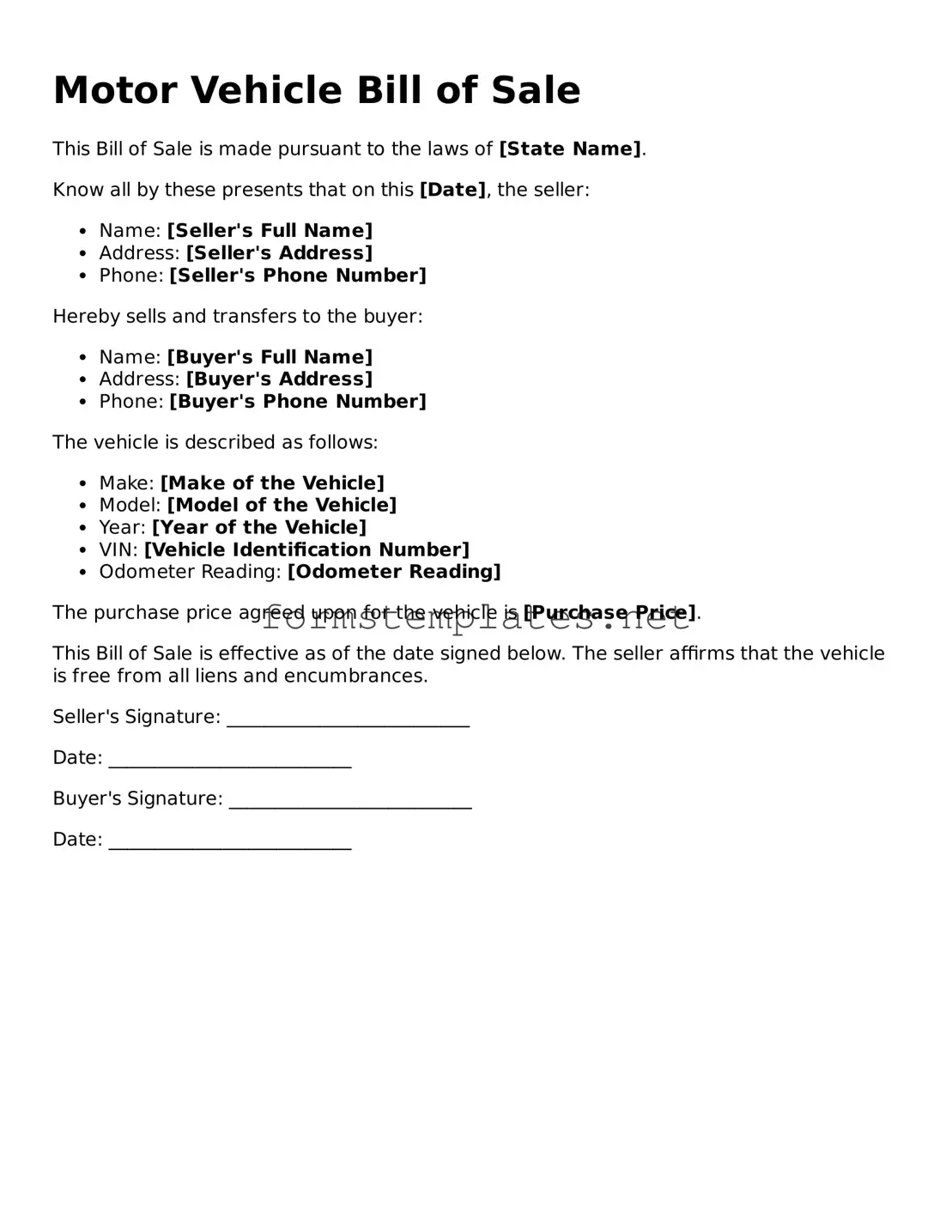Attorney-Verified Motor Vehicle Bill of Sale Form
The Motor Vehicle Bill of Sale form is a legal document that records the transfer of ownership of a motor vehicle from one party to another. This form serves as proof of the sale and includes important details such as the vehicle's identification number, make, model, and the sale price. Completing this document is essential for both buyers and sellers to ensure a smooth transaction and proper registration of the vehicle.
Open Editor Now
